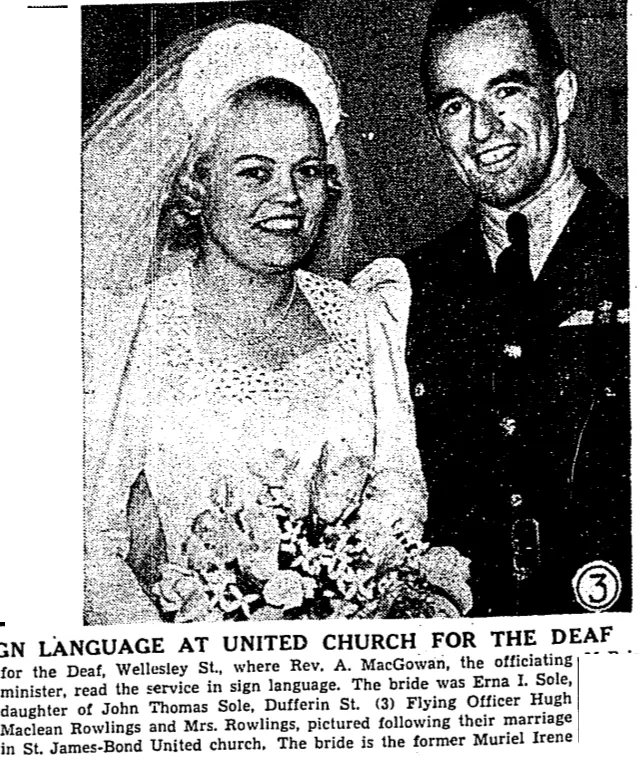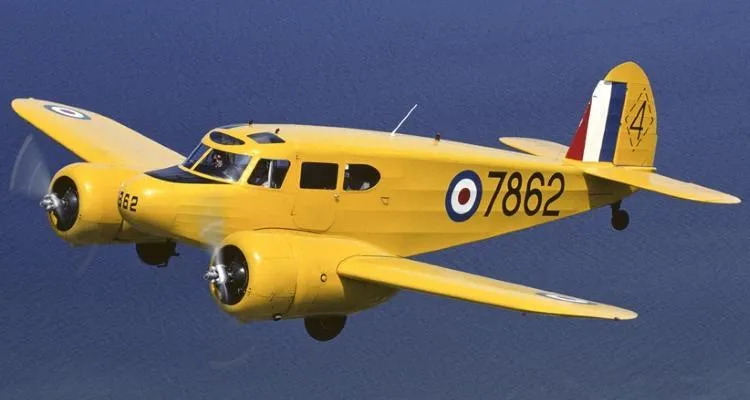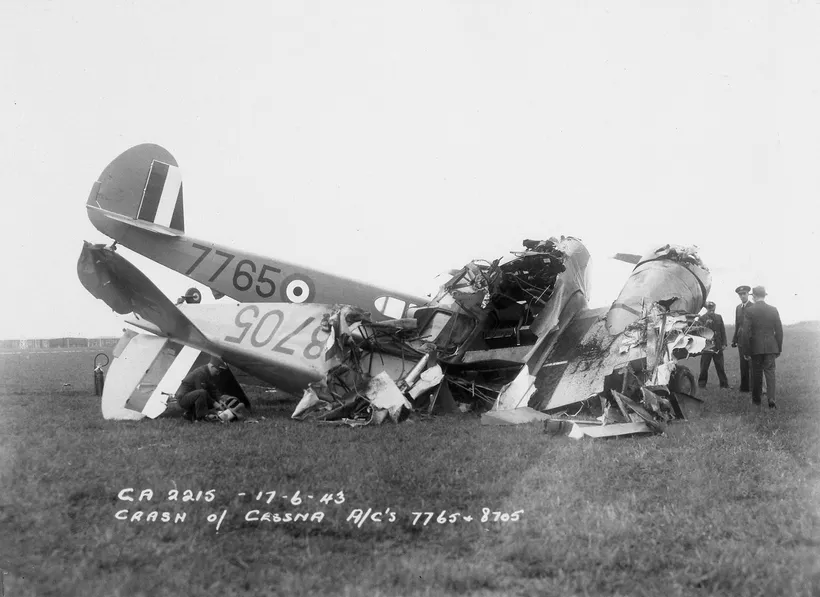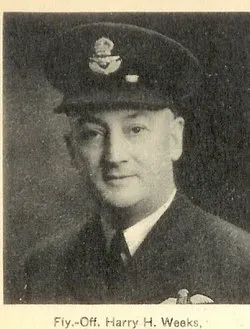Rowlings, Hugh Mclean
Killed in Flying Accident 1942-04-27


Birth Date: 1917-June-07
Born:
Son of Charles W. Rowlings and Anna P. Rowlings, of Boulderwood, Nova Scotia; husband of Muriel Rowlings, of Toronto, Ontario.
Home: Boulderwood, Halifax County, Nova Scotia
Enlistment:
Enlistment Date: Unknown
Service
RCAF
Unit
3 SFTS- Service Flying Training School
Base
Calgary, Alberta, Canada
Rank
Flight Lieutenant
Position
Flight Lieutenant
Service Numbers
C/1039
First Burial
 Prospect Cemetery, Toronto, Ontario
Prospect Cemetery, Toronto, Ontario
This incident involved multiple aircraft:
- Fort Serial: 3591
- Fort Serial: 3591
- Crane Mk. I Serial: 8701
- Crane Mk. I Serial: 8701
All the above aircraft in the above list are referenced in this report.
Crane 8701
Cessna Crane

Canadian Warplane Heritage Museum
The Cessna T-50 Crane was the RCAF version of the Cessna AT-17 Bobcat, a twin-engined advanced trainer designed and made in the USA during the Second World War. It served to bridge the gap between single-engined trainers and twin-engined combat aircraft.
First flown in 1939, the American-built Cessna Crane was developed as a five-seat, light transport civilian aircraft. It was originally intended to serve only a minor role within the BCATP (an initial 180 were ordered in 1940) until the Canadian-built Avro Ansons became available in greater numbers. This was the first large order that Cessna had received for one of its products. Eventually, more than 5,400 Cranes would be produced, of which 826 saw service with the RCAF. Cessna Cranes were used primarily to teach future bomber pilots, after they had received their initial training, to fly multi-engined aircraft at Service Flying Training Schools in western Canada.
Powered by 245-horsepower Jacobs R-755-9 radial engines, Cessna Cranes featured wooden wings and tail married to a fuselage constructed of welded steel tubing. Most of the aircraft was fabric-covered. It was cheap, reliable and relatively easy to fly, with a top speed of 315 kilometres (195 miles) per hour.
The Crane provided twin-engined complexity with economy of operation and went on to become one of the most important aircraft used by the BCATP. Cranes continued to serve with the RCAF until 1947, after which many were purchased by private individuals and companies.
Nicknamed the Bamboo Bomber because of its largely wood construction, the Crane had a reputation as a stable and reliable aircraft. Although not an ideal training aircraft because of its poor single-engined performance and load-carrying capability, it performed its duties satisfactorily and helped train several thousand bomber pilots.Bomber Command Museum of Canada
3 SFTS (3 Service Flying Training School)
Graduates of the EFTS "learn-to-fly" program went on a Service Flying Training School (SFTS) for 16 weeks. For the first 8 weeks the trainee was part of an intermediate training squadron; for the next 6 weeks an advanced training squadron and for the final 2 weeks training was conducted at a Bombing & Gunnery School. The Service schools were military establishments run by the RCAF or the RAF.
There were two different types of Service Flying Training Schools. Trainees in the fighter pilot stream went to an SFTS like No. 14 Aylmer, where they trained in the North American Harvard or North American Yale. Trainees in the bomber, coastal or transport pilot stream went to an SFTS like No. 5 Brantford where they learned multi-engine technique in an Airspeed Oxford, Avro Anson or Cessna Crane.

For More Information on RCAF Station Calgary see here


 Bomber Command Museum of Canada
Bomber Command Museum of Canada
Fort 3591
Fort 3591
Category B damage at 14:37 on 27 April 1942 while with No. 3 Service Flying Training School at Calgary, Alberta. Collided with Crane 8701 over the Calgary aerodrome, the Crane was written off.1941-12-30 Taken on Strength 2019-08-20
1942-April-27 Accident: 3 Service Flying Training School Loc: Aerodrome Names: Flatt | Rowlings | Weeks
1942-April-27 Accident: 2 Wireless School Loc: Calgary Names: Newell | Simpson
1943-March-02 Accident: 2 Wireless School Loc: Near Crossfield Alberta Names: Cato | Forsyth
1943-05-12 Struck off Strength 2019-08-20
Fort 3591
Fort 3591
Category B damage at 14:37 on 27 April 1942 while with No. 3 Service Flying Training School at Calgary, Alberta. Collided with Crane 8701 over the Calgary aerodrome, the Crane was written off.1941-12-30 Taken on Strength 2019-08-20
1942-April-27 Accident: 3 Service Flying Training School Loc: Aerodrome Names: Flatt | Rowlings | Weeks
1942-April-27 Accident: 2 Wireless School Loc: Calgary Names: Newell | Simpson
1943-March-02 Accident: 2 Wireless School Loc: Near Crossfield Alberta Names: Cato | Forsyth
1943-05-12 Struck off Strength 2019-08-20
Crane 8701
Crane Mk. I 8701
First assigned to No. 3 Service Flying Training School at Calgary, Alberta. Category A crash at 14:37 on 27 April 1942. Collided with Fort 3591 over the Calgary aerodrome. The Fort landed safely without further damage. Had 234:15 logged time when written off. All 3 occupants of this aircraft killed: instructor Flight Lieutenant H.M. Rowlings, student Leading Aircraftman B.A. Flatt and 50 year old link instructor Flying Officer H.H. Weeks, who was along for a ride during a wings test.1942-01-17 Taken on Strength No. 4 Training Command 2019-08-20
1942-April-27 Accident: 2 Wireless School Loc: Calgary Names: Newell | Simpson
1942-April-27 Accident: 3 Service Flying Training School Loc: Aerodrome Names: Flatt | Rowlings | Weeks
1942-06-09 Struck off Strength Written off, scrapped at No. 3 SFTS 2019-08-20
Crane 8701
Crane Mk. I 8701
First assigned to No. 3 Service Flying Training School at Calgary, Alberta. Category A crash at 14:37 on 27 April 1942. Collided with Fort 3591 over the Calgary aerodrome. The Fort landed safely without further damage. Had 234:15 logged time when written off. All 3 occupants of this aircraft killed: instructor Flight Lieutenant H.M. Rowlings, student Leading Aircraftman B.A. Flatt and 50 year old link instructor Flying Officer H.H. Weeks, who was along for a ride during a wings test.1942-01-17 Taken on Strength No. 4 Training Command 2019-08-20
1942-April-27 Accident: 2 Wireless School Loc: Calgary Names: Newell | Simpson
1942-April-27 Accident: 3 Service Flying Training School Loc: Aerodrome Names: Flatt | Rowlings | Weeks
1942-06-09 Struck off Strength Written off, scrapped at No. 3 SFTS 2019-08-20
 Canadian Virtual War Memorial
Canadian Virtual War Memorial Commonwealth War Graves Commission
Commonwealth War Graves Commission

 Cessna Crane Trainer
Cessna Crane Trainer Wikipedia Crane Trainer
Wikipedia Crane Trainer Harold A Skaarup Web Page
Harold A Skaarup Web Page